 |
|

|
 |
TABLE of CONTENTS
 |
Project profile: I-35W Minnesota River Bridge is on track despite uncooperative weather |

Crews pour bridge deck concrete for I-35W over 106th Street in Bloomington. The pours are done at night to reduce the impacts to traffic during peak travel times. Photo by Tom Villar |
By Kirsten Klein, Metro Communications and Engagement
Replacing a 1,446-foot-long bridge in the middle of several major Twin Cities construction projects has the potential to disrupt many motorists’ daily commutes, not to mention create a headache for occasional commuters.
But even with this season’s uncooperative weather, the Interstate 35W Bridge construction has proceeded with a minimum of traffic impacts. During the past 14 months, the contractor has succeeded in maintaining six lanes of traffic for the nearly 115,000 vehicles traveling through the area each day.
Last August, construction crews began a multi-year project between Burnsville and Bloomington to raise I-35W out of the floodplain, improve pedestrian access across the river, and replace two I-35W bridges at 106th Street and the Minnesota River. During the first year of construction, crews have been able to build retaining walls, install piers and pour most of the deck for the new northbound bridge. The final I-35W deck pour is expected this week.
Despite losing two months of construction time due to the high water on the Minnesota River, crews are still on track to have motorists traveling on the new northbound bridge later this fall.
“We expect a big change to traffic this fall,” said Tom Villar, construction manager. “In order to stay on schedule, all traffic needs to be moved over to the new northbound bridge by this winter. If weather cooperates, this may happen in October.”
Crews will complete work on the I-35W Minnesota River Bridge in fall 2021.
More information
|
 |
|

|
 |
TABLE of CONTENTS
 |
New research aims to reduce, mitigate construction impacts on local businesses |

Everson Murzyn, MnDOT District 7 design engineer, drives with a visitor at the Roundabout Rodeo event in St. James in 2017. The Hwy 4/St. James downtown project is featured in a new Transportation Research Synthesis as an example of effective preconstruction and constrution mitigation efforts. MnDOT staff photo
|
By Micaela Resh, Office of Research & Innovation
How are MnDOT and other state DOTs working to mitigate the impacts of construction projects on local businesses?
Answers can be found in a new Transportation Research Synthesis. It assesses communication tools, construction tools, techniques that reduce noise during construction and best practices for engaging with business owners from minority communities.
The TRS included an online survey distributed to the American Association of State Highway and Transportation Officials Committee on Construction and selected municipal transportation agencies. Survey questions focused on five topic areas:
- Policy and programing
- Mitigation tools and practices
- Liaisons and partnerships
- Assessment of mitigation tools and practices
- Case studies
Respondents included state DOTs from Michigan, Minnesota, Oregon, Pennsylvania, Vermont and Wisconsin, as well as the Twin Cities Metropolitan Council.
Jeanne Aamodt, technical liaison for the TRS project, said respondents reported a range of strategies and practices in all areas.
“Virtual meetings, animated project models, social media and strategies to accelerate construction received high marks,” she said. “Conversely, project hotlines, advertising and financial compensation for loss of business were considered ineffective, received mixed reviews or were not used.”
Construction-related strategies that earned an “effective” rating included on-site signage, alternative parking for affected businesses and construction staging incentives to provide continuous access to businesses.
Other construction-related strategies that earned favorable ratings included a “get in, stay in, get out” approach to accelerate construction; A+B bidding (which factors time plus cost to determine the low bid); incentives or disincentives for contractors; and working with the local community in construction project planning.
“Examples include Vermont working with the community to identify the best time of the year for a closure or work period, and Wisconsin alerting the public and businesses to the planned construction staging once the project is let,” Aamodt said.
The TRS also presents highlights from reviewing 11 case studies of agency success stories. These include two MnDOT projects: the Glenwood Complete Streets project in District 4 and the Hwy 4/St. James downtown project in District 7. Both featured highly effective preconstruction and construction mitigation activities, Aamodt said.
The research findings will be used to update the original 2009 Mitigation of Transportation Construction Impacts to Business guidance. They will also provide content in public and business-engagement training aimed internally at project management, public engagement and communications staff, and externally at local transportation partners and consultant contractors.
In addition to Aamodt, the TRS Technical Advisory Panel included Dave Glyer, project coordinator, and district and Central Office staff members Erik Baxstrom, Kent Barnard, April Crockett, Jim Curran, Peter Harff, Mandi Lighthizer-Schmidt, Tom Lundberg, Cindy Morgan, Ron Rauchle, Jim Skoog and Kevin Walker.
Note: A Transportation Research Synthesis is a short-turnaround research report that addresses a specific research topic. They include summaries of completed and in-progress research, or reports about the state of the practice among departments of transportation.
|
 |
|

|
 |
TABLE of CONTENTS
 |
Combined Charities Campaign launches Oct. 1 |
By Joseph Palmersheim
The annual Minnesota State Combined Charities Campaign runs through October with a 2019 goal of 5 percent of MnDOT employee participation.
Last year, 53 participating employees (slight more than 1 percent) pledged $30,400. To reach this year’s goal, 250 MnDOT employees will need to participate in the online giving campaign, said Ron Bisek, contract administrator in the Office of Traffic, Safety and Technology.
Bisek has been a member of the Combined Charities Campaign Board of Directors since 2002.
“Five percent sounds like a big jump, but no pledge is too small,” he said. “Even a pledge of $2 or $3 per paycheck, less than the cost of a latte, can help us achieve our goal and make a difference to the charities we support.”
State employee donations help support more than 1,400 charities representing a wide variety of health, education, environmental, arts and social service programs. There are more than 30 approved charitable federations to choose from, representing hundreds of charities working in communities across Minnesota.
“The charitable federations in the campaign, and the charities they support, rely on campaigns like ours to set their budgets for the year,” Bisek said. “Payroll deduction contributions give them a consistent source of contributions they can rely on to serve the needs of Minnesotans across the state. State employees give because we care and want to make Minnesota a great place to live and work. Giving through payroll deduction is an easy way to make a difference because it’s spread across 26 pay periods.”
Employees can participate by pledging online through the convenience of payroll deduction. Signing up for payroll deduction is a convenient way of giving to multiple organizations at once, and reduces administrative costs for the charities. Payroll deduction also provides a place to locate charitable contributions for tax reporting purposes.
The Combined Charities Campaign charity federation fair will be from 11 a.m. to 1 p.m. Tuesday, Oct. 1, on the ground floor of the Transportation Building. There will be games and prizes.
Contact the district Combined Charities Campaign coordinator if you have any questions:
District 1 – Sarah Roe
District 2 – Joe McKinnon
District 3 – Betty Jo Winterowd
District 4 – Kayla Pavlacky
District 6 – Debbie Tlougan
District 7 – Anne Wolff
District 8 – Linda Vandendriessche
Metro – Maureen Widmer
Bridge Office – Lisa Gaughan
Central Office – James Pontius
Visit mn.gov/mmb/combined-charities to learn more. Pledging occurs online at the State of Minnesota’s self-service website.
|
|
 |
|

|
 |
TABLE of CONTENTS
 |
Asset management plan, system achieve major milestones |
By Dave Solsrud, Asset Management Program
MnDOT recently completed its first Transportation Asset Management Plan, and implemented its enterprise-wide Transportation Asset Management System. These accomplishments are the result of contributions from hundreds of MnDOT employees over more than two years.
Congress passed legislation in 2012 requiring states to develop transportation asset management plans. The new TAMP addresses asset inventory, performance measures, risk, lifecycle planning, financial plans and investment strategies for 10 asset classes beyond pavements and bridges. These include culverts, deep stormwater tunnels, high mast light towers, overhead sign structures, signals, lighting, noise walls, intelligent transportation systems, pedestrian infrastructure and buildings.
In order to produce the TAMP, numerous employees with special expertise were brought together for each asset class. The teams assessed asset conditions, lifecycle costs and best practices for maintenance. The TAMP helps to guide MnDOT’s decision-making, from high-level investment direction setting to day-to-day maintenance decisions.
“MnDOT is so fortunate and grateful to have had the participation of the countless contributors to the TAMP effort,” said Shannon Foss, TAMP project manager. “MnDOT’s TAMP is often cited by the Federal Highway Adminsitration as an example of a high-quality product. It couldn’t have been done without the commitment of our passionate employees. Thanks to everyone who played a part.”
MnDOT also recently completed the department-wide implementation of the new TAMS. This software system houses the asset inventory, condition, work history and inspection records for most of the assets outside of the road and bridge categories. TAMS also functions as a work management and tracking system for maintenance operations through the use of work orders and other reporting functions.
TAMS will give MnDOT the ability to more accurately manage infrastructure, understand costs and objectively determine resource needs. A recent report from the Office of the Legislative Auditor cited TAMS implementation as a critical component in assisting MnDOT to improve its understanding of costs and efficiencies in managing the public’s infrastructure.
“The contributions of those involved in the development of the TAMS are greatly appreciated, and we especially appreciate the users who have now made TAMS utilization a part of their daily work,” said Jean Wallace, Modal Planning and Program Management assistant division director. “The TAMP and TAMS are each critical components of MnDOT’s agency goal of Enhancing Strategic Asset Management, and MnDOT thanks employees for making these efforts a success.”
More information
|
 |
|

|
 |
TABLE of CONTENTS
 |
Staffing updates |
By Joseph Palmersheim
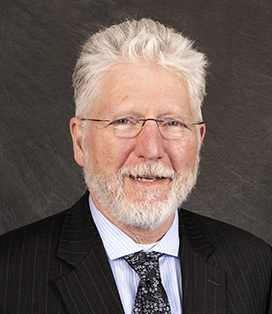
Scott Peterson. Photo by Rich Kemp |
Scott Peterson has been appointed deputy commissioner and chief administrative officer.
In this role, he will lead the Finance, Workforce and Agency Services Division, and the Policy and Government Affairs office. He will also join the executive leadership team.
Peterson most recently served as assistant commissioner of Policy and Government Affairs. Previously, he served as the director of the Office of Government Affairs for more than a decade. Prior roles include director of Finance, assistant to the deputy commissioner, and senior economist. He has been with MnDOT since 1995.
“Scott’s experience and deep knowledge of MnDOT make him a great fit for this new role,” said Commissioner Margaret Anderson Kelliher. “As we focus on the future of transportation and executing our agency’s strategic plan, Scott’s leadership will help ensure a sustainable transportation system that supports Minnesota’s economy and quality of life.”
Peterson has a bachelor’s degree in political science from Dakota Wesleyan University and a master’s degree in economics from South Dakota State University.
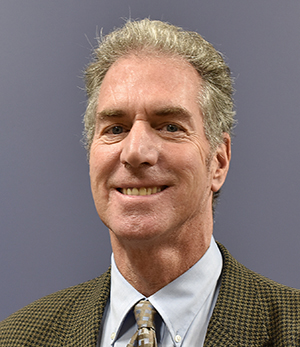
Matt Shands. Photo by Rich Kemp |
Matt Shands, a former MnDOT employee from 2009-15, is rejoining the agency to serve as the assistant to the chief financial officer.
His work will focus on leading efforts to improve efficiency measurement and reporting capabilities as the agency moves toward capturing efficiency information within the Capital Highway Information Management Enterprise System, or CHIMES. He will also work in various other areas in support of fiscal, legislative, financial and economic activities.
Shands spent the last five years in Geneva, Switzerland, while his wife worked for the United Nations’ International Labor Organization. He has a bachelor’s degree in planning from the University of Washington, and a master’s degree in public administration from the Humphrey School of Public Affairs at the University of Minnesota.

Brian Kary. Submitted photo |
Brian Kary is the new temporary Metro Operations and Maintenance director.The role includes oversight of the design and integration of new traffic management systems deployed for MnDOT.
Kary has worked with MnDOT since 1999. His work with the agency has included freeway operations, traffic analysis and incident management. His last two years have been spent as the director of the Regional Transportation Management Center, which includes the MnPASS system, the Freeway Incident Response Safety Team program, ramp metering and the freeway operations.
He earned a bachelor’s degree in civil engineering (with an emphasis in traffic engineering) from the University of Minnesota.
|
 |
|

|
 |
TABLE of CONTENTS
 |
Employees learn about work, personal safety |
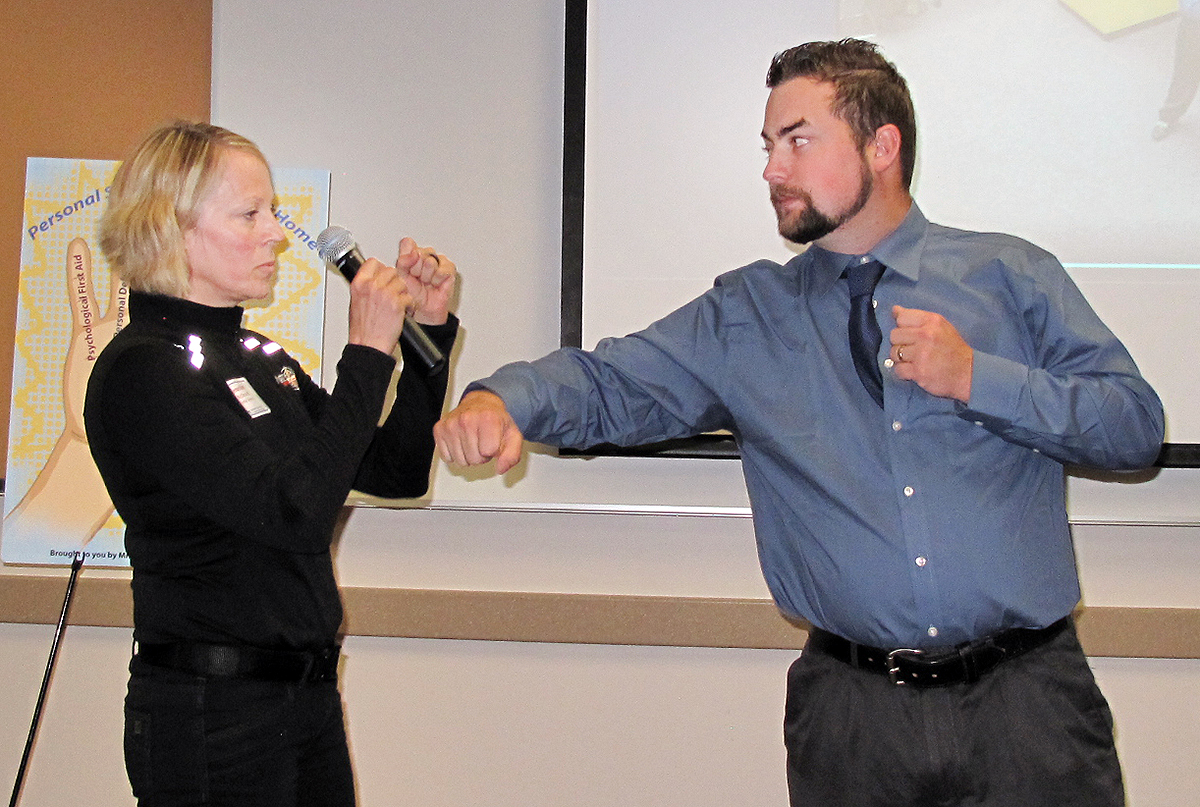
Jennifer McDowell, founder and owner of Astrid Defense, demonstrates a Krav Maga self-defense technique with Nick Kreft, Office of Administration information desk and security supervisor. McDowell used demonstrations to help illustrate the safety measures people can use in the event of an attack. Photo by Jenny Seelen, District 3 Communications
|
By Judy Jacobs
More than 180 people attended the Violent Incident Awareness Team Symposium in St. Cloud on Sept. 10.
The symposium focused on personal safety while on the job and at home. The VIAT Team, originally known as the Violent Incident Advisory Team, was first formed in 1995 in response to a legislative mandate to all state agencies triggered by the national rise in homicides, domestic abuse and violent workplace incidents.
In 2017, VIAT shifted focus to raising and creating awareness of incidents of violence in the workplace. The Critical Incident Stress Management Team and Threat Assessment Team subgroups were also formed.
Sue Mulvihill, deputy commissioner and chief engineer, serves as the VIAT champion. Mulvihill welcomed the group of MnDOT employees, as well as employees from several other state agencies.
“It’s really unfortunate that we have to talk about this,” she said. “But it’s important to be aware of what’s going on around you, and to think about personal safety at home and at work, too.”
Janet Cherney, assistant commissioner, Workforce and Agency Services, opened the symposium. She noted that VIAT was initially formed to make recommendations on organizational response to prevention and management of violence, and also to draft and implement MnDOT’s Zero Violence policy.
Topics presented at the symposium included avoiding and surviving violence, psychological first aid, personal defense tactics, and social media and cyber security.
Jennifer McDowell, founder and owner of Astrid Defense, talked about the importance of knowing one’s surroundings and being safe in all situations. Using Krav Maga self-defense tactics, McDowell provided scenarios so attendees could actually see some of the safety measures they can use in the event of an attack.
“Create a distance between you and the threat,” McDowell said. “Defend yourself against the primary attack, but be ready and able to attack the attacker.”
Mulvihill ended the training with a recap of the presentations and reiterated how important it is to be aware of your surroundings.
“You can take actions to protect yourself from becoming a victim,” she said.
Visit the VIAT webpage for more information about VIAT and violent incident protection.
|
 |
|

|
 |
TABLE of CONTENTS
 |
National aviation convention lands in St. Paul |
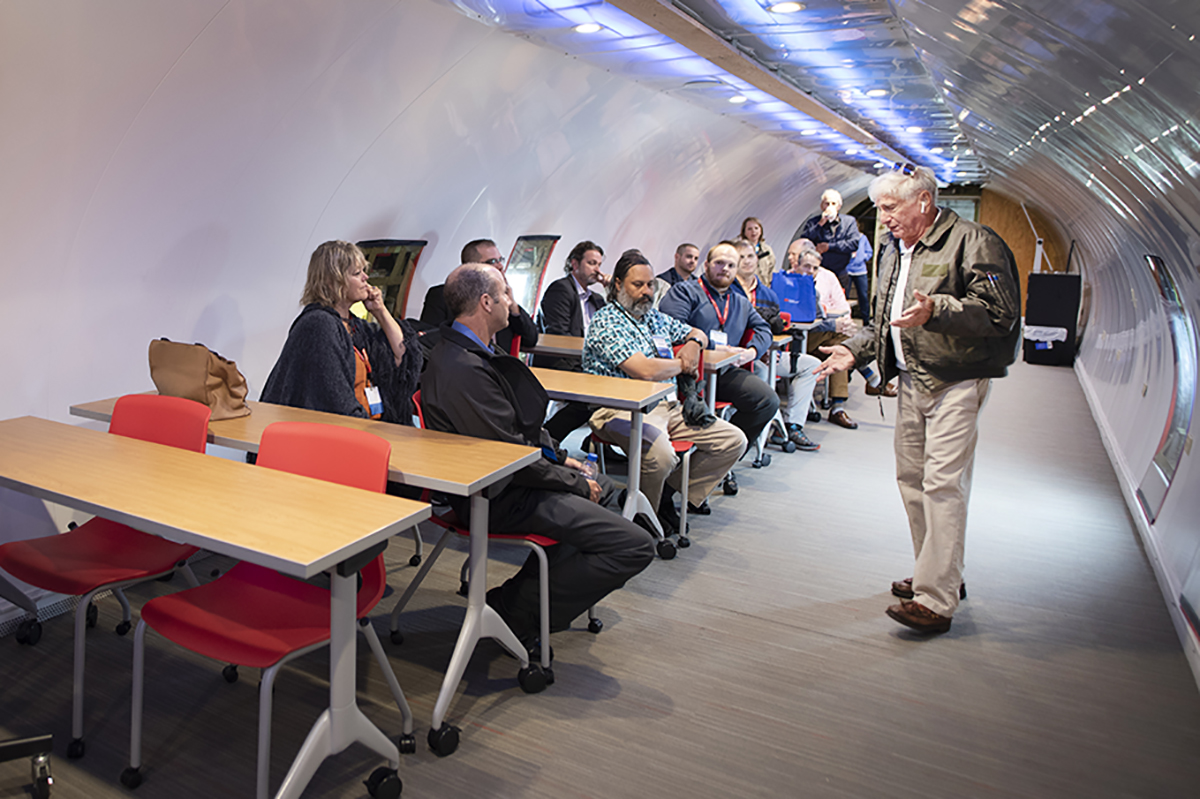
MnDOT retiree Steve Horvitz explains to NASAO national conference attendees how the Learning Jet is used for education and outreach. The renovated Boeing 727-200 cargo jet is now a classroom for K-12 students and community organizations. Photo by Michael McCarthy
|
By JP Gillach
MnDOT hosted the 88th annual National Association of State Aviation Officials Convention and Trade Show Sept. 7-11 in downtown St. Paul.
The convention brought together more than 320 aviation professionals from the private and public sectors under the theme of “Partnerships at Work.” MnDOT staff helped coordinate all planning and logistics for the event, including breakout sessions, speakers, exhibitors and audio-visual equipment. Nine Office of Aeronautics staff also presented at five different breakout sessions.
The event began with a panel discussion addressing the current aviation workforce shortage. The panel included Mark Baker, CEO of the Aircraft Owners and Pilots Association; Pete Bunce, General Aviation Manufacturers Association; Pat Waddick, president of innovation and operations for Cirrus Aircraft of Duluth; and Bill Lentsch, executive vice president of Delta Airlines.
“The pilot shortage has a direct impact on regional airlines,” said Cassandra Isackson, Office of Aeronautics director. “But the overall workforce shortage also extends to mechanics and other technical personnel who serve as the front line for safe, efficient operations of Minnesota’s air transportation system.”
Other topics at the conference included the federal Airport Improvement Program and urban air transport. Federal Aviation Administration keynote speakers included Dan Elwell, deputy administrator; Kirk Shafer, associate administrator for airports; and Mark House, assistant administrator for finance and management. During the Tuesday morning keynote address, Jayshree Seth, 3M’s chief science advocate, shared 3M’s recent work to develop the next generation of scientists.
Some of the more than 80 breakout session topics and activities included a tour of the 3M Innovation Center; committee meetings about airspace, drones, finance, grants and FAA’s NextGen efforts to modernize the air transportation system; and an innovation field trip to St. Paul Downtown Airport.
“This was a great opportunity to exchange information and learn from other states and partners in private industry,” Isackson said. “For example, Mark House from FAA spoke about the fully funded federal Aviation Trust Fund and Congress’s continued delays to release funds to maintain basic federal aviation systems. That forces our state and local resources to be spent to preserve existing infrastructure like navigational aids and pavements.”
Learn more about NASAO and the convention at nasao.org, or contact MnDOT’s Office of Aeronautics.
|
 |
|

|
 |
TABLE of CONTENTS
 |
New library materials now available |
New library materials are now available. In addition to the list of newly cataloged materials by subject, this issue highlights publications related to cultural competence.
New Library Materials is a compilation of new titles and other resources added to the library collection during the previous month. Email MnDOT Library to be added to the distribution list, or send requests via the Ask a Librarian webpage.
|
 |
|

|
 |
TABLE of CONTENTS
 |
April Crockett receives 'Professional Manager of the Year' award |
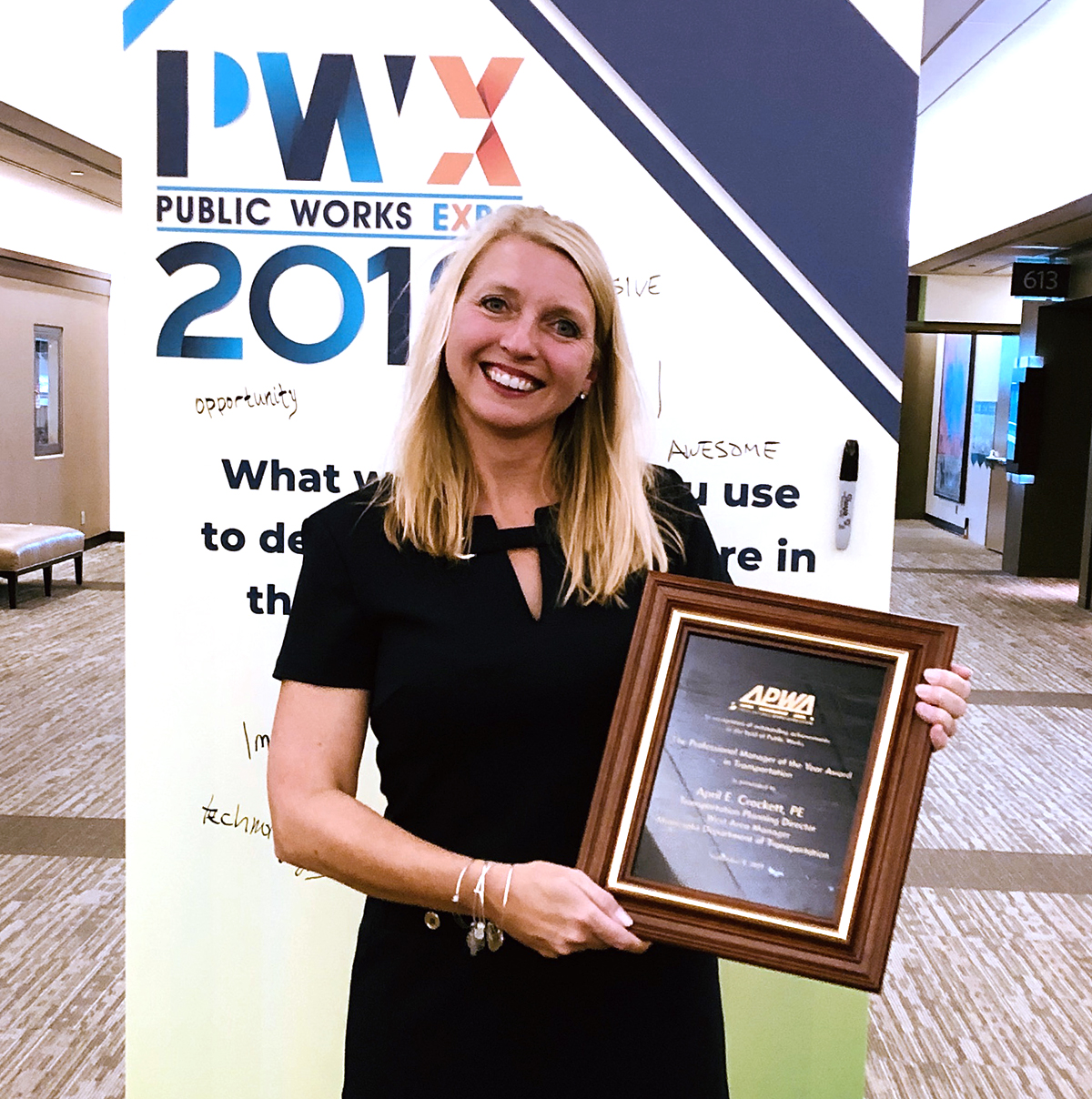
April Crockett received the "Professional Manager of the Year" award from the American Public Works Association Sept. 9. Photo by Robert Jones |
By Joseph Palmersheim
April Crockett, west area manager in Metro Program Delivery, recently received the American Public Works Association “Professional Manager of the Year - Transportation” award.
The award recognizes outstanding achievements in the area of public transportation professionals within the public works field.
“I found out earlier this summer and was very humbled and honored to be nominated by my peers and colleagues for such award, much less to actually receive the award,” Crockett said. “I enjoy working with people, both internal and external, to come up with transportation solutions that best meet the needs of everyone. I enjoy the variety of my days. I could be meeting with elected officials for one meeting, heading to a neighborhood meeting at a local church or school for the next and then digging into design details regarding a bridge width for a project.”
Crockett has served as the west area manager for the past four years. She has been with MnDOT since 2008, serving also as a program delivery engineer and senior engineer.
|
 |
|

|
 |
TABLE of CONTENTS
 |
Bridge office receives State Government Innovation Award for repair project |
By Mary McFarland Brooks

Paul Pilarski, bridge engineer, (right) holds his 2019 State Government Innovation Award. He is pictured with Ed Lutgen, bridge construction and maintenance manager. Photo by Rich Kemp
|
Paul Pilarski, bridge engineer, recently received a 2019 State Government Innovation Award for research demonstrating that heavily deteriorated concrete beams can be repaired quickly, on site, with available materials.
The beam repair process is called “pneumatically placed concrete,” or “shotcrete.” The Michigan Department of Transportation and the Federal Highway Administration developed the technique in 1998. Working with the Bridge Office, Pilarski initiated a trial beam repair, which was installed in 2013 on Hwy 169 Nine Mile Creek Bridge. The repair was monitored for several years and demonstrated good performance.
The repaired bridge was replaced in 2017. Research funding allowed the repaired beams and adjacent beams in good condition to be salvaged for testing. Testing on four salvaged beams at a University of Minnesota research facility revealed that two of the repaired beams exceeded the strength of the two similar bridge beams in good condition that had not been repaired.
“We are trying to do more with less these days with our aging infrastructure,” Pilarski said. “This research enables a bridge that has isolated areas of high deterioration to be given a longer life without significant investment.”
This type of repair offers time and cost-saving advantages for the agency. A single bridge beam replacement typically requires up to a month of traffic interruptions. In addition, the shotcrete repair method cost approximately $10,000 versus $300,000 for traditional bridge beam repair.
MnDOT and the city of St. Paul have used the shotcrete method to repair three more bridges, including I-94 in downtown Minneapolis. MnDOT estimates it has already saved at least $1.3 million thanks to the results of the $69,000 U of M study.
Learn more here
|
 |
|

|
|

|
 |
TABLE of CONTENTS
 |
On the Job: Megan Muckenhirn creates, edits maps using GIS software |
By Joseph Palmersheim
SEEDs student worker Megan Muckenhirn is a senior at the University of Minnesota majoring in urban studies. Since starting with MnDOT in May, she's been creating and editing maps with Geographic Information & Mapping in the Office of Transportation System Management. Click on the image to see a larger version.

Do you or a co-worker have an interesting job to share with readers? Send us your ideas, and we’ll contact you for more information.
Recent employee profiles:
|
| |
|
| |
|



